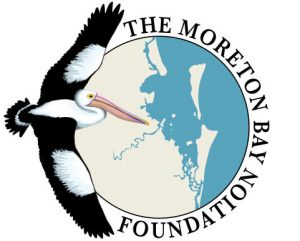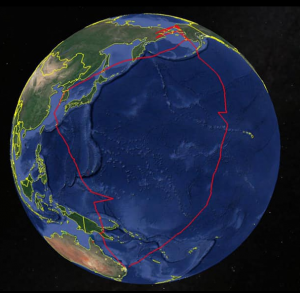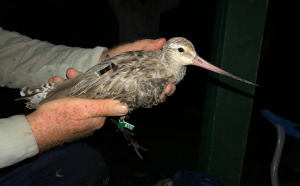
Sanderling return to Moreton Bay
We promised to keep you updated on the adventures of our Sanderling, the shorebird we sponsor through The Moreton Bay Foundation. The Sanderling are just beginning to arrive back in Moreton Bay along with other migratory shorebirds, after their huge round-trip migrations and we’re all set to give them a warm welcome.
Sanderling undertake massive migratory flights to reach their breeding grounds in the Arctic, but they are even more remarkable in that their non-breeding grounds span every continent in the world, from the Americas to Australasia!
Regardless of where their journey begins, it starts with a feeding frenzy. About a month before their departure Sanderling begin packing on the weight, increasing their body mass at a rate of almost 10% per day from about 53 grams up to 91 grams. That’s an increase of 70%, or the equivalent of a 60kg person, packing on 6kg per day until they’re 100kg. And we’re worried about our lock-down weight gains!
Even more remarkably, at the same time as storing fat and beefing up their flight muscles, like the pectorals and the heart, they actually decrease the size of organs that aren’t essential for flight, morphing their bodies into a migration masterpiece.
 Sanderling that spend their non-breeding season in Australia use the East-Asian Australasian Flyway for migration. They begin to depart in early May, and their timing is impeccable. The first stage of their journey involves a 7000km flight, using the Earth’s magnetic field to navigate them across the equator to their stop-over sites in South-Eastern Asia. Their May departure ensures that they arrive at their stop over sites just when the temperatures throughout Southern Asia begin to increase, allowing them to rest and feed to fuel the next part of their migration. They depart Southern Asia in late May, allowing them to make multiple small flights, hopping their way northward through Asia to their breeding grounds in far-northern Russia. They arrive just as the snow begins to melt in early June, coinciding with massive invertebrate blooms which allow their chicks to feed easily, increasing their chances of survival. The entire northward journey traverses about 12,000km across 40 days.
Sanderling that spend their non-breeding season in Australia use the East-Asian Australasian Flyway for migration. They begin to depart in early May, and their timing is impeccable. The first stage of their journey involves a 7000km flight, using the Earth’s magnetic field to navigate them across the equator to their stop-over sites in South-Eastern Asia. Their May departure ensures that they arrive at their stop over sites just when the temperatures throughout Southern Asia begin to increase, allowing them to rest and feed to fuel the next part of their migration. They depart Southern Asia in late May, allowing them to make multiple small flights, hopping their way northward through Asia to their breeding grounds in far-northern Russia. They arrive just as the snow begins to melt in early June, coinciding with massive invertebrate blooms which allow their chicks to feed easily, increasing their chances of survival. The entire northward journey traverses about 12,000km across 40 days.
Breeding and raising young is hard work, and the Sanderling southwards migration is slow and leisurely. Departing their breeding grounds in late July the birds take twice as long to trace their footsteps back to Australia. They trundle into South-eastern Asia in mid-August, and don’t arrive back in Australia until early October.
All of this is to say that Sanderling are just beginning to arrive back in Australia from their massive migration. Over the past 5 months these birds have flown over 24,000 km, that’s halfway around the world! Hopefully we can give them a warm welcome back to Australia with some undisturbed, nutrient-rich shorelines!
Hopefully one day soon, we too can travel around the world again, although with a little less effort on our part compared to these birds that travel around the world under their own steam. Until then, we can certainly enjoy our own back yard in Moreton Bay and appreciate our incredible fauna a little more.
The Moreton Bay Foundation’s upcoming Day on the Bay event is scheduled for 23rd October on the grounds of the Little Ships Club, Dunwich. Last year’s Day on the Bay event saw the start of a race between two sponsored birds, Penny the Godwit and Gloria the Eastern Curlew. Both birds have been tracked on their annual round-trip migration. Penny is currently enjoying some R&R on Khao Phing Kan (better known as James Bond island) in Thailand, before her final leg home. Gloria is still in China and at this stage, so it looks like Penny might beat her home. Both should be back by this year’s Day on the Bay event on October 23rd for one of them to be crowned the winner.
However at least one Bar-Tailed Godwit with a tracker (Godwit BYX) has already arrived home. He was fitted with a platform terminal transmitter (PTT) at Lytton Claypan, Port of Brisbane on the 21st Feb 2021, when he was determined to be an adult male. He left the Port of Brisbane area on 2nd Apr, arriving in South Korea 6 days later where he stayed until 8th May, fattening up for the next leg of the journey. Leaving on
He then retraced his steps and spent several weeks in southern Alaska preparing for the journey south leaving on the 4th September 2021. The return migration was nothing short of remarkable with a non-stop, overwater flight of 10,800km in 10 days, direct from Alaska to Moreton Bay.
If you would like to learn more about his epic journey, you can do so here: https://www.facebook.com/QueenslandWaderStudyGroup
To book tickets you can email your request to admin@moretonbayfoundation.org. If you would like further information about the Moreton Bay Foundation click here.
| Book your tickets now for the Day on the Bay Long Lunch, 23 October 2021 on the grounds of the Little Ships Club, Dunwich
Locally sourced, sustainable seafood and produce prepared by chef Richard Webb 10:30am Tour of UQ’s Moreton Bay Research Station $250 per ticket or $2500 for a table of ten |
Our next update will be all about the technology being used to track the shorebirds on their migration. Also, what is being learned from tracking that will help preserve the shorebirds and any ethical considerations in the use of tracking technology.
Thanks to Joshua Wilson (PhD Student at UQ) for providing the scientific information in this post.

